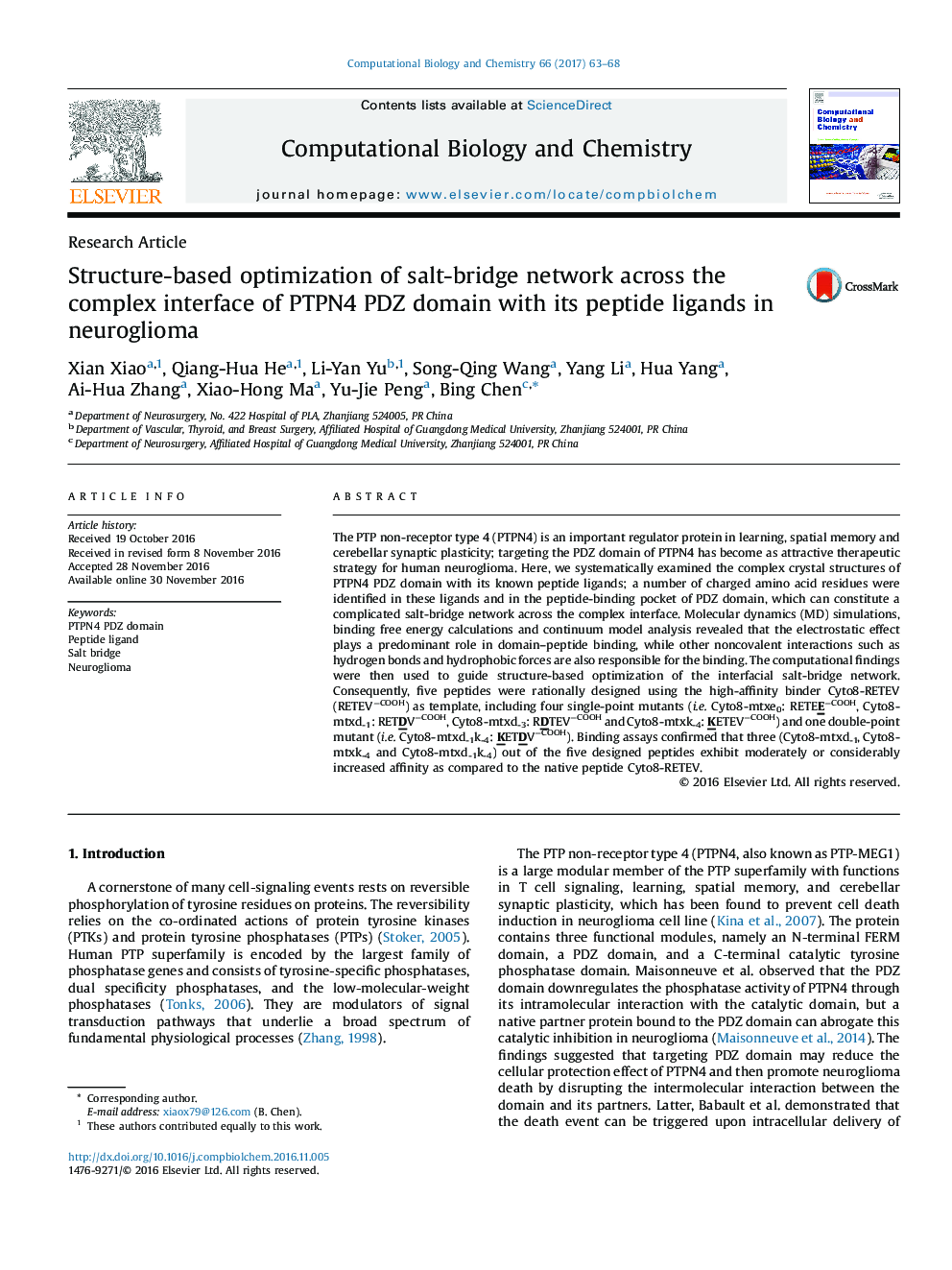| کد مقاله | کد نشریه | سال انتشار | مقاله انگلیسی | نسخه تمام متن |
|---|---|---|---|---|
| 6451385 | 1416281 | 2017 | 6 صفحه PDF | دانلود رایگان |

- The structural dynamics of peptide binding to PTPN4 PDZ domains is investigated systematically.
- A number of charged residues involved in a salt-bridging network is found across the binding interface.
- Potent peptide binders of the domain are designed by optimizing the salt-bridging network.
The PTP non-receptor type 4 (PTPN4) is an important regulator protein in learning, spatial memory and cerebellar synaptic plasticity; targeting the PDZ domain of PTPN4 has become as attractive therapeutic strategy for human neuroglioma. Here, we systematically examined the complex crystal structures of PTPN4 PDZ domain with its known peptide ligands; a number of charged amino acid residues were identified in these ligands and in the peptide-binding pocket of PDZ domain, which can constitute a complicated salt-bridge network across the complex interface. Molecular dynamics (MD) simulations, binding free energy calculations and continuum model analysis revealed that the electrostatic effect plays a predominant role in domain-peptide binding, while other noncovalent interactions such as hydrogen bonds and hydrophobic forces are also responsible for the binding. The computational findings were then used to guide structure-based optimization of the interfacial salt-bridge network. Consequently, five peptides were rationally designed using the high-affinity binder Cyto8-RETEV (RETEVâCOOH) as template, including four single-point mutants (i.e. Cyto8-mtxe0: RETEEâCOOH, Cyto8-mtxd-1: RETDVâCOOH, Cyto8-mtxd-3: RDTEVâCOOH and Cyto8-mtxk-4: KETEVâCOOH) and one double-point mutant (i.e. Cyto8-mtxd-1k-4: KETDVâCOOH). Binding assays confirmed that three (Cyto8-mtxd-1, Cyto8-mtxk-4 and Cyto8-mtxd-1k-4) out of the five designed peptides exhibit moderately or considerably increased affinity as compared to the native peptide Cyto8-RETEV.
122
Journal: Computational Biology and Chemistry - Volume 66, February 2017, Pages 63-68